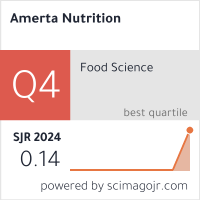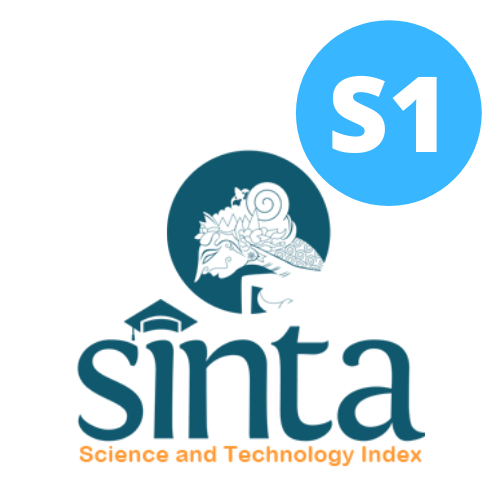Influence of Sociodemographic, Dietary and Clinical Factors on The Risk of Diabetic Retinopathy among Type 2 Diabetic Patients
Pengaruh dari Faktor Sosiodemografi, Pola Makan, dan Klinis terhadap Risiko Retinopati Diabetik pada Pasien Diabetes Tipe 2
Background: Diabetes mellitus is one of the most frequently occurring metabolic disorders, and is associated with Diabetic Retinopathy (DR), which damages the retina and can lead to vision loss.
Objectives: The study investigated the relationship between sociodemographic, dietary, and clinical factors on the risk of DR in individuals with Type 2 Diabetes (T2DM).
Methods: The study was conducted from November 2023 to April 2024 in Coimbatore, South India. Anthropometric measurements, Demographic, clinical, and dietary details were gathered by interviewing patients. Descriptive and binomial logistic regression were used to find out the relationship between the predictors and DR.
Results: A total of 216 patients were diagnosed with T2DM for at least a year, including 41.66% of study participants with retinopathy and 58.33% without retinopathy; the majority (58%) were male, aged 40 to 59. Based on the Multivariable binomial logistic regression, indicated that Occupation (OR: 112.23, 95% CI=6.91,1820), Education (OR: 0.0753,95% CI=0.01,0.53), Monthly income (OR: 0.01,95% CI=0.01,8.27x10-04,0.25), Hypertension (OR: 1.15,95% CI=0.02,1.89), dry fruits consumption (OR: 11.41, 95% CI=1.009,128.98), sugar and jaggery (OR: 1.10, 95%CI = 0.020,1.521), the monounsaturated oils (Peanut oil, Mustard oil, Sesame oil) (OR: 0.028, 95% CI = 0.037,0.0.22) had significant associations with DR.
Conclusions: Sociodemographic, dietary, and clinical factors appear to have significant associations with the presence and severity of DR. It is important to monitor people with Type II diabetes on a healthy diet, as well as maintaining blood pressure and glycaemic status within the normal range is likely to delay the progression of the disease.
Hossain, M. Diabetes mellitus, the fastest growing global public health concern: early detection should be focused. Health Sci. Rep. 7, e2004 (2024).
International Diabetes Federation. Diabetes basics. https://idf.org (accessed 18 June 2024).
Williams, R. et al. IDF Diabetes Atlas 2019. Int. Diabetes Found. 9, 107843 (2019).
Teo, Z. L. et al. Global prevalence of diabetic retinopathy and projection of burden through 2045: systematic review and meta-analysis. Ophthalmology 128, 1580–1591 (2021).
Gurudas, S. et al. National prevalence of vision impairment and blindness and associated risk factors in adults with diabetes: results from the SMART-India study. Lancet Glob. Health 12, e838–e847 (2024).
Schwingshackl, L. & Hoffmann, G. Mediterranean dietary pattern, inflammation and endothelial function: a systematic review and meta-analysis. Nutr. Metab. Cardiovasc. Dis. 24, 929–939 (2014).
Hu, F. B. Globalization of diabetes: the role of diet, lifestyle, and genes. Diabetes Care 34, 1249–1257 (2011).
Schwingshackl, L. et al. Food groups and risk of chronic disease: a protocol for a systematic review and network meta-analysis. Syst. Rev. 5, 125 (2016).
Chong, M. F. F., Macdonald, R. & Lovegrove, J. A. Fruit polyphenols and CVD risk: a review of human intervention studies. Br. J. Nutr. 104 (Suppl), S28–S39 (2010).
Kiecolt-Glaser, J. K. et al. Omega-3 fatty acids, oxidative stress and leukocyte telomere length: a randomized controlled trial. Brain Behav. Immun. 28, 16–24 (2013).
Guilbert, E. et al. Short-term effectiveness of nutrition therapy to treat type 2 diabetes in low- and middle-income countries: systematic review and meta-analysis. BMJ Open 12, e056108 (2022).
Ley, S. H. et al. Prevention and management of T2DM: dietary components and nutritional strategies. Lancet 383, 1999–2007 (2014).
Charan, J. et al. Sample size calculation in medical research: a primer. Ann. Natl. Acad. Med. Sci. (India) 57, 74–80 (2021).
Telles, S. et al. Development of a food frequency questionnaire to assess dietary intake for residents of northern India. Indian J. Ancient Med. Yoga 9, 4 (2016).
Rothenberg, E. et al. Relative validity of a short 15-item food frequency questionnaire measuring dietary quality. Nutrients 13, 3754 (2021).
Flaxel, C. J. et al. Diabetic retinopathy preferred practice pattern. Ophthalmology 127, P66–P145 (2020).
Jia, G. & Sowers, J. R. Hypertension in diabetes: an update of basic mechanisms and clinical disease. Hypertension 78, 5 (2021).
Luo, Y. F. et al. Nonlinear relationship between systolic blood pressure and diabetic retinopathy in type 2 diabetes. medRxiv (2022). https://doi.org/10.1101/2022.10.18.22281231.
Bryl, A. et al. The effect of diet and lifestyle on the course of diabetic retinopathy: a review of the literature. Nutrients 14, 1252 (2022).
Boeing, H. et al. Vegetables and fruit in the prevention of chronic diseases. Eur. J. Nutr. 51, 637–663 (2012).
She, C. et al. Association between dietary antioxidants and risk for diabetic retinopathy in a Chinese population. Eye 35, 1977–1984 (2021).
Rahimi-Madiseh, M. et al. The research and development on the antioxidants in prevention of diabetic complications. Asian Pac. J. Trop. Med. 9, 825–831 (2016).
Shah, J. et al. Dietary intake and diabetic retinopathy: a systematic review. Nutrients 14, 5021 (2022).
Valero-Vello, M. et al. Antioxidant, anti-inflammatory and neuroprotective potential of natural foods and supplements for ocular health. Foods 10, 1231 (2021).
Misra, R. et al. Red meat consumption (heme iron intake) and risk for diabetes and comorbidities. Curr. Diab. Rep. 18, 100 (2018).
Kearney, P. Review of the role of refined dietary sugars (fructose and glucose) in the genesis of retinal disease. Clin. Exp. Ophthalmol. (2024).
Yang, C., Yu, Y. & An, J. Effect of high-sucrose diet on the occurrence and progression of diabetic retinopathy. Nutrients 16, 1393 (2024).
Sala-Vila, A. et al. Dietary marine ω-3 fatty acids and incident sight-threatening retinopathy in type 2 diabetes. JAMA Ophthalmol. 134, 1142–1149 (2016).
Millen, A. E. et al. Adequate vitamin D status is associated with reduced odds of diabetic retinopathy. Cardiovasc. Diabetol. 15, 128 (2016).
Lau, D. C. Diabetes in the elderly: a silent global tsunami. Can. J. Diabetes 40, 2–3 (2016).
Sasaki, M. et al. Associations of dietary polyunsaturated fatty acids with diabetic retinopathy in well-controlled diabetes. Invest. Ophthalmol. Vis. Sci. 56, 7473–7479 (2015).
Alcubierre, N. R. et al. Association of low oleic acid intake with diabetic retinopathy in type 2 diabetes. Nutr. Metab. 13, 99 (2016).
Wang, Z. et al. Deciphering the role of oleic acid in diabetic retinopathy: an empirical analysis of monounsaturated fatty acids. Nutr. Metab. 21, 97 (2024).
Díaz-López, A. et al. Mediterranean diet, retinopathy, nephropathy and microvascular diabetes complications: a post hoc analysis of a randomized trial. Diabetes Care 38, 1117–1123 (2015).
Radhika, G. et al. Glycaemic index of Indian flatbreads (rotis) prepared using whole wheat flour and ‘atta mix’. Br. J. Nutr. 102, 1017–1023 (2009).
Copyright (c) 2025 Amerta Nutrition

This work is licensed under a Creative Commons Attribution-ShareAlike 4.0 International License.
AMERTA NUTR by Unair is licensed under a Creative Commons Attribution-ShareAlike 4.0 International License.
1. The journal allows the author to hold the copyright of the article without restrictions.
2. The journal allows the author(s) to retain publishing rights without restrictions
3. The legal formal aspect of journal publication accessibility refers to Creative Commons Attribution Share-Alike (CC BY-SA).
4. The Creative Commons Attribution Share-Alike (CC BY-SA) license allows re-distribution and re-use of a licensed work on the conditions that the creator is appropriately credited and that any derivative work is made available under "the same, similar or a compatible license”. Other than the conditions mentioned above, the editorial board is not responsible for copyright violation.












































